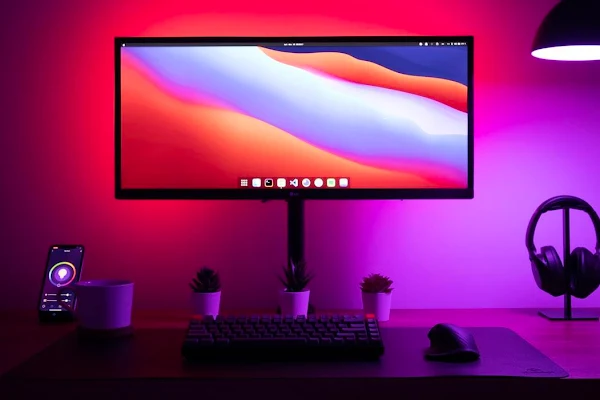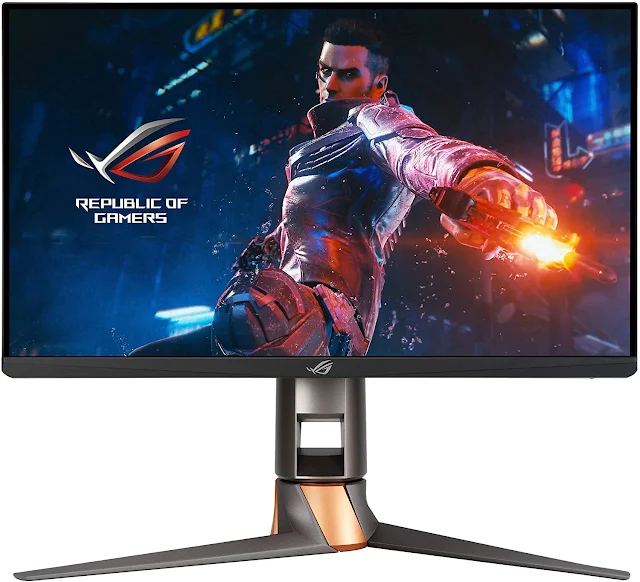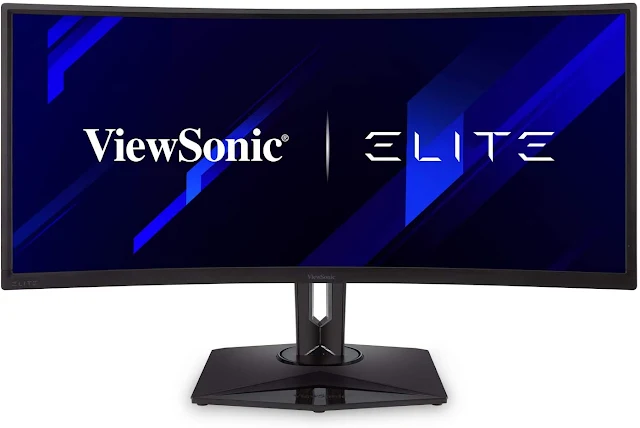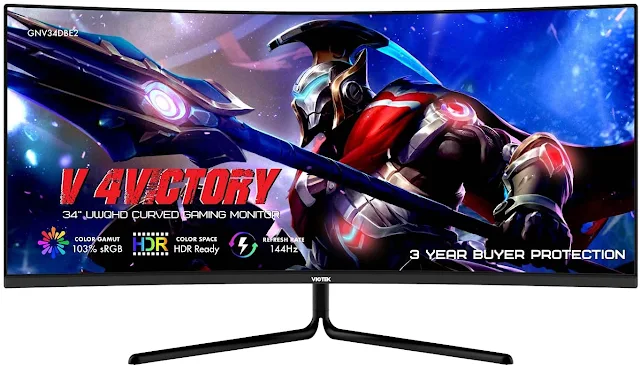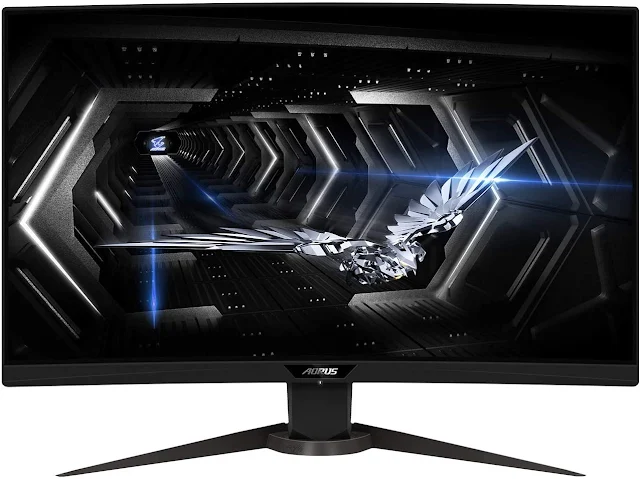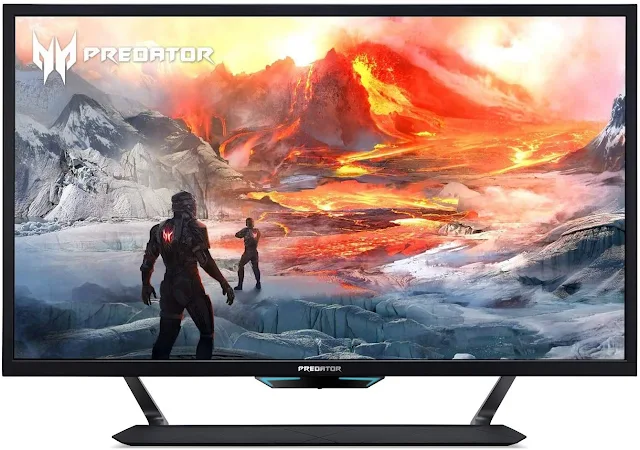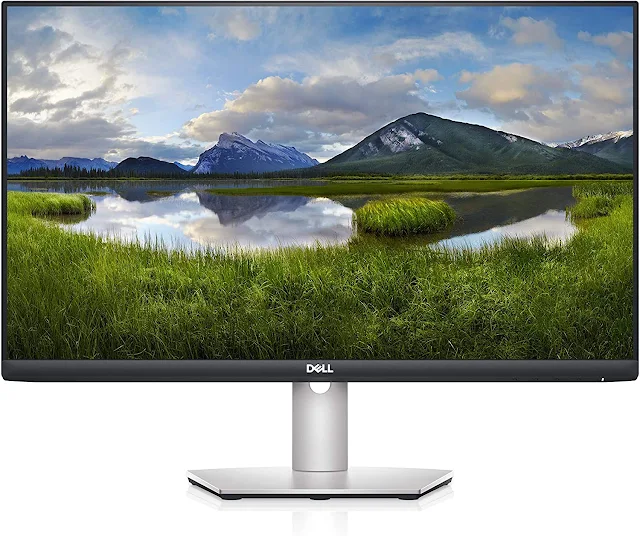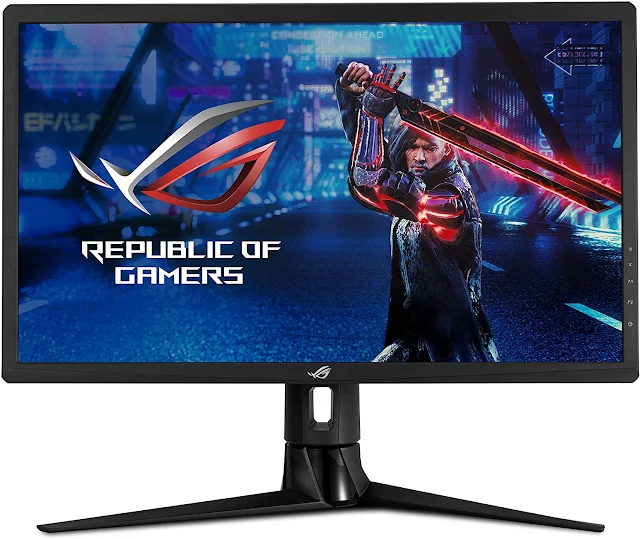Today we will talk about the 21 best budget gaming monitors. Best budget gaming monitors should be the most difficult peripheral to purchase among all gaming peripherals. Not only is there a large number of them, but the price range is also large.
As a heavy gamer, the gaming experience brought by a good monitor is self-evident. Yes, so here few many questions out there, that's is which is the best budget gaming monitor? Which type of monitor is most cost-effective? What is the best most affordable gaming monitor? How to choose a gaming monitor? What should I look for in a budget gaming monitor? All of the above queries follow up on in this article.
Today I will introduce to you a few best budget gaming monitors that I personally think are not bad. I will still recommend them one by one according to the price budget. I hope it will be helpful to you who are planning to buy the best budget gaming monitor.
Best Budget Gaming Monitor: Budget, 144Hz, and Higher
The quality of the best budget gaming monitor itself is extremely good, and the screen color will be calibrated when it leaves the factory. If it is used to cope with general professional design work, I will focus on it when I introduce a specific best-budget gaming monitor.
This issue does not include VA screens. The main reason is that I personally do not recommend you buy a VA panel display. I hope that the old folks will not spray me.
For the best budget gaming monitor, in addition to the screen refresh rate, the response time of the monitor is also a very important reference indicator. At present, almost all the best budget gaming monitors will mark themselves with a response time of 1 ms.
But in fact, there are many word games that manufacturers fool us. Regarding the screen response, we only need to pay attention to the GTG response, which is the gray-scale response. This is the real response time parameter.
The following begins to recommend specific best-budget gaming monitors. Best budget gaming monitor for USA, UK, Australia, Philippines, and Canadian gamers.
Related Topics:
- Best keyboard for gaming: mechanical, membrane, and wireless
- 21 Best Budget Gaming Monitor: Reviews and Buying Guide
- What are the best monitors for gaming: Top gaming monitors
- What is The Best Mechanical Keyboard?
- What is the best gaming mouse in the world?
- What is the most comfortable gaming chair?
- What is The Best Gaming Laptop in The World?
- What is The Best Laptop for College Students
- Best 4K Monitors for Gaming, Home Office, Movies, and Ultra Wide sizes
- What monitors do pro gamers use? - Best gaming monitors
- What Are The Best Useful Accessories To Buy For Macbook Pro?
- Why Do People Choose to Buy Apple Products?
Choosing the best budget gaming monitor for you
When looking for the best budget gaming monitor, there are a variety of panel types for you to choose from: IPS, TN, VA, and even OLED, each with its own advantages and disadvantages. You will not forget the screen size and aspect ratio, they will affect your view, desktop space, and bank account. And, we haven't even discussed awards such as speakers, RGB, or port selection. How do players choose?
Quick shopping tips for the best budget gaming monitor
When trying to buy the best budget gaming monitor for your PC, consider the following factors:
- Is it G-Sync or FreeSync? G-Sync is only available for PCs with Nvidia graphics cards, while FreeSync is only available for systems with AMD graphics cards. FreeSync monitors tend to be cheaper, but the performance is comparable. For a detailed comparison of the performance of these two technologies, please refer to our Nvidia G-Sync and AMD FreeSync comparison article.
- For image quality, TN <IPS <VA. Generally speaking. Generally, TN monitors are the fastest but cheapest monitors due to their weak viewing angles. Compared with VA monitors, the response time of IPS monitors is slightly slower, but the colors are better. The best comparison gaming monitor is VA, but the response time of VA is also slower.
- Refresh rate: the bigger the better. This tells you the number of times the monitor is updated with new information per second (expressed in Hertz (Hz)), so it can tell you how many frames per second (fps) the monitor can display. The higher the number, the smoother the image. The refresh rate is especially important for gamers, so you need to shoot at least 75 Hz monitors (most gaming monitors provide at least 144 Hz) while also finding the shortest response time.
1. Dell S3220DGF - Best gaming monitor
Dell S3220DGF is the best gaming monitor among most products because it takes into account price and performance.
Screen size and aspect ratio: 32 inches, 16: 9 | Resolution: 2560 x 1440 @ 165 Hz | Panel type: VA/W-LED, edge array | Refresh rate: 165 Hz | Response time (GTG): 4ms
- High contrast and brightness
- 165Hz refresh rate
- Accurate color
- Good build quality
- No sRGB mode
- No gamma preset
The Dell S3220DGF is the best gaming monitor in most situations. For starters, it has a fast refresh rate, low response time, and FreeSync 2 HDR, which can eliminate screen tearing caused by standard and HDR content at the same time. Most importantly, this 32-inch monitor provides a lot of vertical screen space without scrolling and 1440p resolution (the best balance between current image quality and gaming performance). Its 1800R curve is also great for immersion, and apart from gaming, we found this to be a good monitor for general productivity and anything in between.
Our test proved that the monitor has low input lag, and the panel response speed is very fast for competing gamers, and even if it is not certified, we can even achieve G-Sync compatibility. For users with mid-to-high-budget gaming PCs, this is an excellent monitor.
2. Razer Raptor 27 - Best budget gaming monitor 144hz
The Razer Raptor 27 is the best 144Hz gaming monitor with excellent image quality.
Screen size and aspect ratio: 27 inches, 16: 9 | Resolution: 2560 x 1440 @ 144 Hz | Panel type: IPS | Refresh rate: 144 Hz | Response time (GTG): 4ms
- Excellent HDR contrast
- Saturated color
- DCI-P3 coverage is close to 100%
- Fantastic style and quality
- No true sRGB color mode
- The user must manually switch between SDR and HDR modes
The Razer Raptor 27 is the best gaming monitor with a refresh rate of 144 Hz. It will make any gamer you know jealous of its advanced styles, such as RGB brackets, flat green cables for cable management, and the quality of running water that is worth checking out. In addition, HDR delivery is the best delivery we have seen in edge lighting panels.
Despite its 144 Hz refresh rate, Raptor 27 was able to remain competitive with 165 Hz monitors in our benchmark tests. There is no obvious motion blur, but discerning professional players will have to choose between handling it or activating the backlight strobe, which limits you to 120 Hz, reduces the brightness by 40%, and makes FreeSync and G-Sync compatible Grayed out.
3. LG 27GN950-B - Best budget gaming monitor 4k
If you want the best budget gaming monitor 4k, please check out LG 27GN950-B
Screen size and aspect ratio: 27 inches, 16: 9 | Resolution: 4K | Panel type: IPS | Refresh rate: 144 Hz | Response time (GTG): 1ms
- Pre-order at overclockers
- Excellent HDR
- Wide and accurate color gamut
- Quick response
- sRGB mode is oversaturated
The LG 27GN950-B is the best 4K gaming monitor, providing a clear, high-resolution, high-quality gaming experience. This screen received the best input lag score we have seen, and its response time is consistent with other 144 Hz monitors. If you have a graphics card powerful enough to support the high frame rate of 4K, this monitor will have no problem.
LG 27GN950-B has richer game colors, which can be expanded up to 133.9% of sRGB. At the same time, HDR looks great due to the display's edge array backlight and local dimming function. HDR content has a contrast ratio of 8.45.3:1, which makes it an alternative to higher-priced FALD displays.
However, if you are looking for a larger 4K screen or other features, check out our list of the best 4K gaming monitors.
4. ASUS ROG Swift PG259QN - Best e-sports game monitor
ASUS ROG Swift PG259QN gaming monitor allows you to reach an amazing 360Hz.
Screen size and aspect ratio: 24.5 inches, 16:9 | Resolution: 1920 x 1080 | Panel type: IPS | Refresh rate: 360 Hz | Response time (GTG): 1ms
- Excellent IPS contrast
- Unparalleled speed and response
- No expansion color
- expensive
Although the speed of 360Hz is faster than the speed required by most gamers and what the graphics card can handle, if you are an e-sports gamer (or someone with hope) and want the fastest speed, now You can use a monitor with a 360Hz refresh rate. Playing at 360Hz on ASUS ROG Swift PG259QN (actually has a significant impact on our game. No matter how fast the movement, the background, and the objects are completely unblurred, we are deceived into thinking that we are better gamers.
Of course, you can get a high-resolution display, but at this speed, we quickly forgot what we were missing. The display also lacks extended colors and is expensive, especially considering it is a 24.5-inch 1080p display. However, due to the excellent contrast ratio of the IPS panel (1,265:1 according to our test), the PG259QN is still a multifunctional display that can achieve productivity and other non-gaming tasks
Please note that this monitor comes with a version of the Nvidia Reflex delay analyzer, the Asus ROG Swift PG259QNR. It is more expensive, but it also comes with a compatible Asus mouse.
5. Acer XFA240 - Best budget game monitor
Acer XFA240 is an economical gaming monitor with accurate colors.
Screen size and aspect ratio: 24 inches, 16: 9 | Resolution: 1920 x 1080 | Panel type: TN | Refresh rate: 144 Hz | Response time (GTG): 1ms
- Color accuracy out of the box
- Smooth tear-free game
- FreeSync and G-Sync are compatible
- Good build quality
- Low pixel density
- Gamma is slightly off
If you are looking for an affordable monitor that you can use it to play games immediately, then the Acer XFA240 is perfect for you. This is a 24-inch monitor, the smallest monitor in our "Best Gaming Monitor" list, but it can provide the creator's true colors, as well as Adaptive-Sync for Nvidia and AMD graphics cards.
During our testing, the input lag and response time of the Acer XFA240 competed well with the 27-inch 144 Hz competitors. The color is accurate before adjustment, although we cannot say the same for gamma. Another weakness is the pixel density of the display (compared to our preferred 110ppi which is 911.8ppi).
However, at the time of writing, it is hard not to consider the Acer XFA240 when playing a tear-free game at 144 fps.
6. Samsung Odyssey G7 - Best curved gaming monitor to splurge
The 32-inch Samsung Odyssey G7 is unique.
Screen size and aspect ratio: 32 inches, 16: 9 | Resolution: 2560 x 1440 | Panel type: SVA | Refresh rate: 240 Hz | Response time (GTG): 1ms
- The size and shape are perfect for games or work
- Low input hysteresis
- No spokesperson
It is one of the Samsung 1000R screens, which means it is one of the most curved gaming monitors on the market. If you like the immersive feel of a curved display, then the 32-inch Odyssey G7 will bring you a higher experience.
Whether playing games or working, Odyssey G7's 32-inch amazing 1000R curve attracts us. With this curvature, we can view productivity applications without any image distortion, and our site is full of motion in the game. The 32-inch, 16:9 body provides enough height to improve work efficiency. Coupled with 1440p resolution, it is the best choice for games.
In terms of image quality, according to our tests, before we even calibrate, it has been proved that the 32-inch Odyssey G7 is accurate and has a contrast ratio of 2,121:1.
In our response time benchmark test, this monitor maintained a screen of similar specifications and complied with the 240Hz category. If you are looking for high-end speed, image quality, and form factor, this is it.
7. GIGABYTE G27F - Best 27-inch gaming monitor
The best 27-inch gaming monitor is the Gigabyte G27F.
Screen size and aspect ratio: 27 inches, 16: 9 | Resolution: 1920 x 1080 | Panel type: IPS | Refresh rate: 144 Hz | Response time (GTG): 1ms
- Good contrast
- First-class speeding
- Darker gamma
- No sRGB color gamut option
It is the cheapest 27-inch on this page, but still has excellent gaming performance and is boosted by an excellent overdrive, which is one of the best implementations we have seen recently. At the maximum setting, the monitor's overdrive gear provides images with no visible blur or ghosting artifacts.
In terms of speed, when it comes to response time and input delay, this 1080p screen has an advantage over other 144 Hz monitors. Speaking of FHD resolution, the fast refresh rate of the G27F makes up for the low pixel density at 144 fps.
In terms of image quality, this screen provides a rich and saturated color ratio and contrast, reaching an impressive 1,165:1 after our recommended calibration settings (see page 1 of this review). At such a price, it is difficult for the G27F to rank among the best in 27-inch products.
8. ViewSonic Elite XG350R-C - Best budget ultra-wide gaming monitor
The ViewSonic Elite XG350R-C gaming monitor has an excellent price/performance ratio.
Screen size and aspect ratio: 35 inches, 16: 9 | Resolution: 3440 x 1440 | Panel type: VA | Refresh rate: 100 Hz | Response time (GTG): 3ms
- Excellent contrast and accurate colors
- Fast response at 100 Hz refresh rate
- Good build quality
- Loudspeakers
- No additional contrast in HDR mode
- No expansion color
ViewSonic Elite XG350R-C is cheaper than some other 35-inch ultra-wide screens and ultra-wide screens and has fewer features (even RGB lighting on the back). But what you really want to love is vivid, accurate colors that make textures pop, skin tones look natural and everything looks more realistic.
If you want life-changing HDR or use HDR with Adaptive Sync, please look elsewhere. But in addition to having a 21:9 aspect ratio, Elite XG350R-C also uses an 1800mm radius of curvature, which swallows us with powerful image quality.
9. Viotek GNV34DBE - Best curved gaming monitor
Viotek GNV34DBE is curved and reasonably priced.
Screen size and aspect ratio: 34 inches, 21: 9 | Resolution: 3440 x 1440 | Panel type: VA | Refresh rate: 144 Hz | Response time (GTG): 4ms
- Effective speeding
- High dynamic range
- Need to calibrate for best results
- Shaky stand
- Low, no height adjustment
Viotek GNV34DBE is a curved gaming monitor with good performance and an affordable price. Facts have proved that its 1500R curve increases the immersive feeling during the game and helps to fill our peripheral vision. Despite the tight curve, we still found GNV34DBE suitable for work. Without distortion, we like to open multiple windows to increase productivity.
But this is not just about the GNV34DBE curve. During our testing, you will also get a 144 Hz refresh rate, response time, and input lag, keeping up with the 144 Hz competitors. On the battlefield, with the help of AMD FreeSync, we achieved the high pixel density of the 1440p screen and smooth gaming without any screen tearing. Color and contrast also compete with expensive gaming monitors.
GNV34DBE has an edge-lit backlight and can also provide an excellent HDR display. Compared with typical SDR monitors, it has a significant improvement. At a low price, the construction quality of the booth is lacking. But for fast gaming monitors with effective curves, Viotek GNV34DBE is a good choice.
10. Aorus CV27Q - Best 1440p gaming monitor
Aorus CV27Q provides strong contrast at 1440p resolution.
Screen size and aspect ratio: 27 inches, 16: 9 | Resolution: 2560 x 1440 | Panel type: VA | Refresh rate: 165 Hz | Response time (GTG): 1ms
- Color accuracy
- Speed and responsiveness
- HDR's FreeSync and G-Sync (informal)
- sRGB mode is incorrect
- No image controls for HDR
Gigabyte’s Aorus CV27Q is the best 1440p gaming monitor in terms of high-speed gaming performance. With its impressive specifications, it shines in our input lag and response time tests when competing with 144 Hz competitors. Of course, better performance can be obtained from the 1080p version of Aorus CV27F, but that will not get a sharper QHD resolution or higher pixel density (109ppi).
The VA panel can provide a contrast ratio of 3,000:1, and the image quality is no joke. CV27Q has a lower black level, which makes the image depth look great, especially for HDR titles. But as far as HDR is concerned, the maximum brightness of this display can only reach 400 nits. We prefer HDR displays to be at least 600 nits.
Bonus features include Aorus' Active Noise Cancellation (ANC) feature, which uses two microphones on the front bezel to reduce background noise, others may hear this noise from your gaming headset, and also has a 1500R curve and back RGB lighting. However, if money (in some way) is not an issue, then the $2,300 Acer Predator X35 is a dream come true, and the ASUS ROG Strix XG279Q on this page is indeed much faster.
11. ASUS ROG Strix XG279Q - best 1440p gaming monitor to splurge
If you want, ASUS ROG Strix XG279Q is one of the best gaming monitors upgraded from 1080p.
Screen size and aspect ratio: 27 inches, 16: 9 | Resolution: 2560 X 1440 | Panel type: IPS | Refresh rate: 170 Hz, overclocking, 144 Hz native | Response time (GTG): 1ms
- FreeSync and G-Sync support
- Excellent HDR
- Blur reduction can be used with adaptive synchronization
- high brightness
- Slight ghosting in ELMB mode
- Default grayscale and gamma need to be adjusted
If you want to upgrade from 1080p to 1440p but don't want to sacrifice speed, the Asus ROG Strix XG279Q (usually around $600, currently priced at $630) needs your attention. It is the most expensive of the 27-inch 1440p monitors, but it provides the gaming performance that hardcore enthusiasts might need. In our test, this monitor reduced the response time of the Aorus CV27Q on this page by 1 ms in response time and beat the Aorus CV27Q and Aoris FI27Q in our absolute input delay test (both on this page). The typical gamer won't notice these differences, but if you stick to the best, then you won't ignore this expensive monitor.
In other words, ROG Strix XG279Q is not perfect. When we chose overload instead of motion blur (we can't run at the same time), we noticed ghosting and blurring when motion blur was turned on. In addition, you may need to make some adjustments. However, due to the combination of motion blur and FreeSync or G-Sync compatibility, plus edge lighting and healthy RGB effects, you can also get an excellent HDR, which will drive your crazy games.
12. ASUS TUF VG259QM - Best high refresh rate gaming monitor
The ASUS TUF VG259QM is one of the fastest gaming monitors we have tested.
Screen size and aspect ratio: 24.5 inches/16: 9 | Resolution: 1920 x 1080 | Panel type: IPS | Refresh rate: 240 Hz (overclocked to 280 Hz) | Response time (GTG): 1ms
- Phenomenal games are played at the same time
- Adaptive synchronization and ELMB build quality
- Light gamma
- HDR will not pop up
The ASUS TUF Gaming VG259QM is not the only 240 Hz monitor here, but it is the only monitor that has been overclocked to an impressive 280 Hz. However, this is not only related to the high refresh rate. It also has the ability to combine FreeSync or G-Sync compatibility with ASUS's Very Low Motion Blur (ELMB) function, which optimizes the overdrive of any display. With these features and 280 Hz, our input is almost predictable. This kind of monitor can actually help your game. Asus' VG259QM was among the best in our response time test and performed well in terms of absolute input delay.
One of the shortcomings of this display is its HDR capability. With an IPS panel with a 1,000:1 contrast ratio and only DisplayHDR 400 certification, HDR does not look much better than SDR content. And, of course, you need a decent graphics card to take full advantage of this high-refresh screen.
However, if you need one of the fastest monitors on the market, you can choose VG259QM. There are 360Hz monitors now, but they can reach 280 fps than 360 fps. And at $330, the VG259QM is a decent price.
13. Aorus FI27Q - Best 27-inch IPS gaming monitor
Aorus FI27Q is the best gaming monitor for 27-inch IPS fans.
Screen size and aspect ratio: 27 inches, 16: 9 | Resolution: 2560 x 1440 | Panel type: IPS | Refresh rate: 165 Hz | Response time (GTG): 1ms
- High color saturation and accuracy
- Good contrast
- Premium gaming performance
- Good build quality
- HDR does not bring significant improvement over SDR
- Cheaper competitors may provide better value
If you are looking for the best gaming monitor with a 27-inch IPS panel, the Aorus FI27Q will not disappoint. It has one of the best overdrive implementations on the market, and even if the blur removal function is set, we cannot see ghosting or motion blur under the correct settings. FI27Q has a refresh rate of 165 Hz and has FreeSync and G-Sync compatibility, so it is even better. In our response time test, it also beat 144 Hz competitors, even 165 Hz competitors, including the Aorus CV27Q and Dell S3220DGF on this page. It also maintained its place in our input lag test.
The IPS panel is known for its excellent color, and the color of FI27Q is almost perfect. It outperforms its competitors in terms of accuracy and also beats outstanding competitors, such as the aforementioned Asus ROG Strix XG279Q. Since DCI-P3 is the native color space of FI27Q, FI27Q can provide more colors than you can use on native sRGB monitors. Using SDR games, even if the colors are not accurate enough, we still enjoy high color saturation. You won't get the same contrast ratio as VA (contrast ratio of 1,000:1), but the black level is better than any other IPS gaming monitor we have tested.
The monitor supports HDR content, but it is not the best HDR monitor. In fact, we hardly noticed the benefits of SDR monitors. In addition, you may find that competitors provide more value. But FI27Q ultimately provides excellent images with high-quality gaming features.
14. Samsung 27-inch CRG5 - Best 240 Hz gaming monitor
Samsung's 27-inch CRG5 is the best gaming monitor to reach 240Hz.
Screen size and aspect ratio: 27 inches, 16: 9 | Resolution: 1920 x 1080 | Panel type: VA | Refresh rate: 240 Hz | Response time (GTG): 4ms
- Good contrast and color accuracy
- 240 Hz VA panel
- Excellent gaming performance
- No USB or speakers
For the speed demon, a 240 Hz display will do. Until recently, this level of speed required two things: setting a 1080p resolution and a TN panel. But Samsung’s 27-inch CRG5 (and 24-inch CRG5 ) is the best gaming monitor in its class. This is special because it can manage this speed in our favorite LCD panel VA. Not only does it provide the high contrast and saturated colors that make VA popular, but it is also the fastest monitor we have tested.
During the test, we hardly encountered any defects. As far as image quality is concerned, the biggest item is the incorrect HDMI black level setting. In addition, the only form of adaptive synchronization is G-Sync compatibility. However, apart from these small warnings, our gaming experience is still a record-breaking pleasure.
15. Acer Predator CG437K - Best large-screen gaming monitor
Acer Predator CG437K is the best large-screen gaming monitor.
Screen size and aspect ratio: 43 inches, 16: 9 | Resolution: 4K | Panel type: VA | Refresh rate: 120 Hz (144 Hz with overclocking) | Response time (GTG): 4ms
- The perfect size for table games
- Excellent contrast
- No calibration required
- HDR with a brightness of 1000 nits
- 144Hz requires two DisplayPort cables and sacrifices G-Sync compatibility and HDR support
- expensive
For the big screen experience, Acer Predator CG437K is the best gaming monitor. It fills our peripheral vision better (horizontally and vertically) than the ultra-wide field of view. You can also install it on the table. The image will be located about 6 inches above your desktop-perfect for sitting about 3 feet away. It is also equipped with convenient remote control and excellent speakers, which are very suitable for living room use.
But in addition to the flattering size, the gaming performance of the CG437K is also very good. Its 120 Hz refresh rate can be overclocked to 144 Hz. In our tests, overclocking can compete well with 144 Hz displays or even the Dell S3220DGF at 165 Hz above, even if you are running G-Sync compatibility or HDR content.
Predator CG437K supports HDR with a maximum brightness of 1,000 nits without any halo effect.
16. Acer Predator X35 - Best ultra-wide gaming monitor
If you can afford it, the Acer Predator X35 is the best ultra-wide gaming monitor.
Screen size and aspect ratio: 35 inches, 21: 9 | Resolution: 3440 x 1440 | Panel type: VA | Refresh rate: 180 Hz (200 Hz overclocking) | Response time (GTG): 2ms
- 512 zone FALD backlight
- HDR has a brightness of 1,000 nits
- Jewel-like quality
- expensive
For many people, it is impossible to provide a display at this price, but the Acer Predator X35 is a good example of the type of display we want to have when the price is not an issue. It has an impressive 180 Hz refresh rate and 2ms response time. In our response time and input lag test, it surpassed expensive competitors such as Acer Predator X27a and Asus ROG Swift PG27UQ.
After calibration, due to the Predator X35 full-array local dimming (FALD) backlight, the contrast ratio on this VA panel is 2237:1, and the HDR is excellent. Combined with the certification of at least 1000 nits of maximum brightness, the performance of Predator X35 is much better than other screens when playing HDR games.
17. ViewSonic Elite XG270QC - Budget HDR fun
ViewSonic Elite XG270QC provides excellent HDR at a cheaper price than most competitors.
Screen size and aspect ratio: 27 inches, 16: 9 | Resolution: 2560 x 1440 | Panel type: VA | Refresh rate: 165 Hz | Response time (GTG): 3ms
- Accurate color
- Adaptive synchronization with HDR
- No sRGB mode
If you have always wanted to try an HDR display, but can't afford the best HDR display with a FALD backlight, then the ViewSonic Elite XG270QC is worth a look. Its quality is not FALD, but with side lighting, runner-up, and VA panel. The HDR performance of this display can definitely bring you a significant improvement in SDR.
In our benchmark tests, this monitor stays in sync with other 165 Hz screens, such as the Dell S3220DGF above. For under $500, XG270QC also provides 1440P resolution point gamma. Even without HDR, our calibration settings will bring the contrast to 2897:1. In addition, you will get a pair of very loud 3W speakers.
18. AOC 24G2
AOC 24G2 1080P budget gaming monitor 144hz
AOC 24G2 is the leader among thousands of e-sports monitors and is currently the most popular one. The CEC Panda IPS panel is used, plus a 144hz refresh rate, and 1ms MPRT response time, compatible with G-sync and Freesync.
Support rotation lifting can better protect the cervical spine and lumbar spine! Isn't it fragrant? What more bicycles?
19. AOC Q27G2S
AOC Q27G2S 27 inches 2k 155hz
This is AOC's new display. All parameters have been upgraded. The panel uses FastIPS. As I introduced earlier, the grayscale response time can reach 1 ms, and the refresh rate is 170hz.
It is no problem to play all kinds of games. Supports 10-bit color depth and 122% SRGB color gamut, with brilliant colors and stunning gaming effects. Compatible with G-sync and Adaptive-Sync.
20. Dell 27-inch IPS S2721HS
Dell 27-inch IPS S2721HS | Cost-effective
- Resolution/Refresh rate: 2k, 165Hz Material: IPS
- Applicable scope: games, office, home
This Dell monitor uses a Nano IPS panel with a grayscale response time of 1ms, which is a gaming-level monitor. With a refresh rate of 165 Hz and a color gamut of 98% DCI-P3, whether you are playing FPS games or 3A games, the color effect is even more shocking. Support Free-sync, compatible with G-sync.
If you want the ultimate gaming experience, choose this one!
21. ASUS ROG XG27UQ
ASUS ROG XG27UQ 27 inches
ROG faith players look over and can customize the faith projection effect. It is equipped with 4k resolution and 144hz refresh rate and is equipped with G-SYNC technology and HDR400.
Although it is a 1 ms dynamic picture response time (MPRT), it is already a very good choice in this configuration. Supports rotation and lifting, which can effectively protect the cervical spine.
Before that, I have written two articles related to monitors, both of which are highly praised articles, which have been recognized by many friends. Today, let's talk about how to choose the best budget gaming monitor that suits you? How does the gaming monitor look at the parameters? What monitor is used for playing games?
In short, it is to teach you how to choose an e-sports monitor! Welcome to the FAQ section.
FAQ about Best Budget Gaming Monitor
What is the number of frames?
The number of frames refers to the number of pictures rendered by the graphics card in one second and sent to the display, while the refresh rate refers to the speed of the display's progressive scan.
A brief analysis of the principle of the display, why does the screen tear?
A brief analysis of the principle:
Each software transfers its own picture to the graphics card, and the graphics card draws the pictures received from each software one by one and maps them to the screen, which is the picture we see.
It should also be noted that the current display does not display one by one like a PPT but scans the picture line by line from the upper left corner of the screen until it reaches the lower right corner of the screen. In this way, one picture is drawn by the graphics card. Next, it will restart scanning from the upper left corner of the screen, and so on.
Why does the screen tear?
To put it simply, the display’s [progressive scan] time is fixed, while the graphics card’s drawing time is variable. This will cause the graphics card’s drawing speed to be faster than [progressive scan], which means that the graphics card ran away.
Before the last picture on the monitor is drawn, the next picture will come out, so that the picture will be torn.
There are two ways to reduce screen tearing:
- Lock frame by software
- Through vertical synchronization technology, hardware support, such as G-sync, FreeSync
What is a lock frame? What is the use of locking frames?
The frame lock is to make the number of frames output by the game stabilize at a certain number of frames.
Regarding game lock frames, it can be roughly divided into two categories:
- The game has a built-in frame lock, and game developers actively limit the upper limit of the number of game frames. There are many Japanese games, such as The Black Soul series;
- Use software tools such as RTSS to lock the number of frames. There are many European and American games, such as the Wizard series.
After locking the game frame, players generally believe that the game experience has become more stable and smooth, followed by the ability to reduce the graphics card load, reduce heat, and reduce screen tearing. The frame lock is a double-edged sword.
Although it increases the gaming experience, it loses the performance experience provided by high-end graphics cards. Of course, it depends on the hardware requirements of the game itself.
The principle that the lock frame increases the game experience is: when you are in a 60 FPS game screen and suddenly encounter a complicated game situation, the screen drops to 30 FPS, you will feel that the screen is stuck, and the game experience is poor.
What is the response time, gray-scale response time, and dynamic picture response time?
- Response Time (Response Time): Also called black and white response time, it refers to the time required to turn off the pixel, then turn on and off the pixel ( or from black to white and back to black ).
- Grayscale response time (GTG): This refers to the time required to switch between many grayscales or colors that form an image.
- Dynamic Picture Response Time (MPRT): Insert a black frame between two adjacent frames to reduce the afterimage and reduce the blur effect.
- IMBC: The principle is similar to MPRT.
- Visual Response Enhancement (VRB): Sacrifice screen color and brightness to achieve faster response time.
In the early days, the response time of liquid crystal displays was 12ms, and the grayscale response time required 30-40ms. After explaining the concept of response time, let's talk about the consequences of slow response time? The answer is a blur, afterimage, and ghost.
The response time is as short as possible. When selecting GTG> MPRT = IMBC = VRB> Response Time, MPRT does not actually change GTG, it just changes our visual effects. If you are a professional gaming player, please look for the GTG grayscale response time.
In addition to GTG, other so-called response times will cause eye fatigue and affect the experience.
Why is G-Sync more expensive than Free-Sync? How to choose?
- G-Sync: NVIDIA monitors synchronization technology, compatible with Freesync.
- FreeSync: AMD monitor synchronization technology
- Adaptive-Sync: compatible with G-Sync, FreeSync
The principles of G-sync and Freesync technologies are the same. The difference is that G-Sync is a technical standard of NVIDIA, and Freesync is an open-source technical standard. Therefore, as long as the display manufacturer can use Freesync technology free of charge, but to use G-sync technology, you must pay NVIDIA to get the technology license. This is why G-sync is more expensive than Freesync.
But don’t worry, if you pay the money, Nvidia will do things for you, that is, check whether the G-sync monitor is qualified and whether the components used are compliant, so the G-sync monitor has quality assurance. On the contrary, the quality of Freesync displays is uneven, because Freesync technology is open source and no one manages it uniformly.
How to choose a gaming display panel?
Generally, the TN panel has a very fast response speed and a very high refresh rate, which is suitable for playing games. The VA / IPS panel has high contrast and accurate color reproduction, which is suitable for other situations. It is worth mentioning that Apple's screen is IPS. If you are not a heavy game user, then IPS and VA panels are recommended. For image processing-related industries, IPS panels are recommended. It is worth noting that IPS is also hierarchical, P-IPS> H-IPS> S-IPS> AH-IPS> E-IPS. Poor IPS may not be as good as VA.
Introduction of New Technology of Display Panel
Fast IPS panel:
Fast IPS accelerates the refresh rate by accelerating the movement of liquid crystal molecules. Its response speed is four times faster than that of ordinary IPS panels, so it is very smooth to use and suitable for playing FPS competitive games.
Nano IPS panel:
The Nano IPS panel uses nanoparticles to absorb certain wavelengths of light, such as absorbing unnecessary yellow and orange, which will have a more accurate red shade. Nano IPS color display effect is excellent, 98% DCI P3 color gamut (135% sRGB), suitable for watching movies and action movies, 3A game masterpieces, and FPS games.
Refresh rate
As everyone knows, anime is formed by the continuous playback of the frame by frame. The refresh rate is also a bit similar. The refresh rate refers to how many frames the monitor can update per second, for example, 60FPS, which means that the monitor can refresh 60 frames per second.
Is the refresh rate higher the better?
Some friends may answer, of course, the higher the better! My answer is that when the budget is insufficient, enough is enough, and when the budget is sufficient, the higher the better. Then I will briefly explain my point of view, hoping to help you.
Our increase revenue refresh rate is diminishing marginal, as shown below:
Economically speaking, as the refresh rate increases, the value of every dollar you spend is gradually decreasing.
Display brand selection
- Household: AOC, ViewSonic, Samsung, ASUS, HKC
- E-sports: Acer, BenQ, AOC, Asus, ViewSonic
- Commercial: Philips, Asus, HP, Dell, AOC
- Fish screen: Samsung, LG
What is the combination of the graphics card and monitor
The matching of the graphics card and the monitor is also very important. If you choose a bad choice, the graphics card may not be able to drive the monitor. Generally, the graphics card is backward compatible. You can buy what configuration your graphics card can afford. Monitor.
- 1060 can only afford high-definition 3A masterpieces at 1080P
- 2060 is the threshold to drive 2k144hz displays
- Run 3A masterpieces at 2080 4k resolution, 2K 144hz, most games should be able to achieve low special effects
- 4k 144hz on 3080, no problem
Conclusion of Best Budget Gaming Monitor
The above-recommended best-budget gaming monitor has been screened. If the budget is available, you can consider starting with them.
Finally, if you have a good product, then you can share this article with friends and family and also on your social media. The above recommendation only represents my personal opinion. Welcome everyone to communicate rationally and peacefully. If you are planning to buy a laptop and the necessary gadgets then, you can also read these below articles. I hope it will be helpful to your purchase.
Know someone who might be interested in this article? Share it with them.


